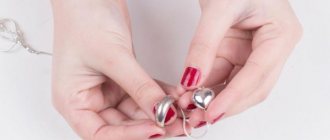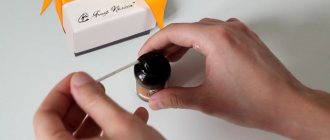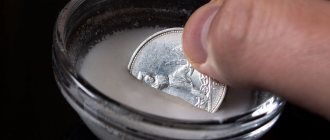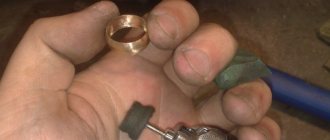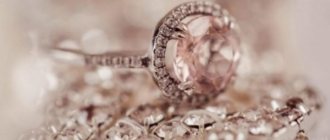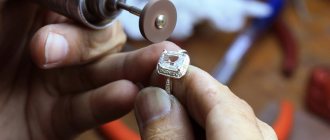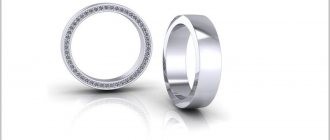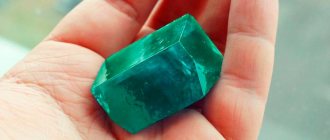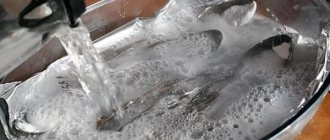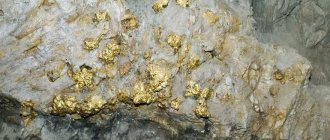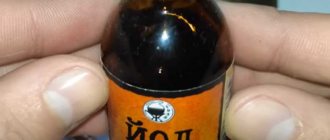Do electroplating
, like any other business, you can do it anywhere.
But it is still advisable to slightly equip your workplace. First of all, there are two things to consider. During your work, you will deal with concentrated acids and other caustic substances. And the second point is that at various stages of galvanization
all sorts of poisonous gases, caustic vapors and other fumes will be released. Therefore, it is advisable to arrange a place where it is difficult to burn anything and there should be ventilation.
The first thought is the kitchen. Practical advice right away. If there is a hood in the kitchen, it is very good, but there should not be filters on the hood!
The author's first experiment to produce concentrated sulfuric acid ended with all sorts of dust and debris, such as nets and fibers, starting to fall out of the hood. It was the sulfuric acid vapor that destroyed the filter and, therefore, we had to buy a hood. So again, good ventilation is the key to the success of the entire electroplating
.
1. Respirator.
A very necessary thing. As we already mentioned, during galvanization
a lot of gaseous nasties are released, which are not good for health. Let's add rubber gloves here. It's better to find autopsy rooms. They are quite durable and at the same time not rough. Working without gloves can result in chemical burns and other problems for the skin of your hands. I highly recommend an apron made of thick oilcloth. Be sure to wear some slippers on your feet.
2. Galvanic
station.
You need a power supply for a current of 30-50A, with an ammeter, smooth adjustment and preferably stabilization of the current strength. It is enough to have a voltage in the range of 12-24V. The diagram is easy to find on the Internet. You need 2 pieces of cable, with a larger area, to connect the anode and the part to the power supply. If you take a cable with a smaller area, it will get very hot, since the current is high. You need a non-metallic container of such volume that your entire part can fit there, plus an anode with the same area. You can use a plastic bowl as a container. If the electrolyte is not stored in a basin, it will last a long time, it has been tested.
3. Heating devices.
I do not recommend using open fire for heating. Not because we are doing something explosive, no. It’s just that with an open fire it’s hard to control the temperature; you can accidentally boil a solution that doesn’t need to be boiled at all, etc. In addition, there is a risk of damaging an expensive gas stove with some kind of solution. Therefore, we will use an electric stove. You will also need an iron with a working thermostat so that you can set the sole temperature to 80 degrees. You will need a sand bath.
4. Dishes.
It is better, of course, to find somewhere a set of chemical utensils (flasks, cups, boiling pots). But if not, you can use any household glass. You will also need a porcelain cup for evaporation, preferably with a spherical bottom. It is advisable to find glass bottles with a ground-in lid for storing reagents and electrolytes.
5. Measuring equipment.
First of all, you need scales, since you will have to measure the reagents with an accuracy of up to a gram. If possible, use factory ones; if not, you can make your own. Take a steel rod d=10 mm, 1=200 mm. Find the middle exactly and drill a hole for hanging. Cut a thread of 15 millimeters on both ends of the rod and screw on the nuts. Immediately behind the thread, drill holes for hanging the cups. Under the suspension of the scales, attach the knitting needle at an angle of 90 degrees (you need to accurately measure the angle). The spoke is a scale indicator. You hang the cups. Next, hang the scales. Use the nuts to adjust the position; it is important that the spoke is directed vertically downwards (you can check it with a plumb line). All scales are ready. All that remains is to find the weights and you can “weigh out”. You can use old Soviet coins as weights. Their denomination corresponds quite accurately to the weight (1 kopeck - 1 g, 2 kopecks - 2 g, 3 kopecks - 3 g, 5 kopecks - 5 g).
And finally, you need a thermometer. Scale range 10-130 degrees.
Features and technology of galvanization
Electroplating of jewelry has been used for a long time.
It allows you to improve the physical and technical properties of jewelry. And the process itself is economical. Galvanization occurs by immersing jewelry in a solution of salts and acids, which act as electrolytes. When a direct electric current is passed through such a composition, the coating moves onto the precious metal. The chemical reaction itself is known to everyone from school, where during chemistry lessons they conducted similar experiments with non-precious alloys.
The process of applying galvanic coating to products is almost completely automated. The decorations are lowered into large baths made of sheet steel with a thickness of 3 to 5 mm. The capacity of such containers is from 1 to 300 liters. Additionally, they are equipped with a heating and ventilation system, which is necessary for disinfection of the process. The design also includes special pockets into which foam and oils go.
For rhodium plating, separate types of baths made of glass are used to ensure the purity of electrolysis.
Types of galvanizing baths
To obtain an even galvanic coating in jewelry, various baths are used. The main types include:
- Stationary rectangular baths, which are installed in large jewelry production facilities.
- Drum or bell tower rotating models. In them, the gilding process is 20-30% slower than in the first subtype, but the quality is slightly higher.
Baths also vary in capacity:
- from 15 to 30 l - used for gilding;
- from 100 to 500 l - for coating the surface with silver;
- from 1 to 2 liters - for rhodium plating.
The structure is heated using steam or electric current. The electrolyte is mixed under the influence of compressed air pressure or rotation of the cathode rod.
How jewelers prepare items for electroplating
To explain in simple terms what galvanization is in jewelry, it is an improvement in the quality of precious alloys by covering it with an additional layer of metal. Moreover, every jeweler knows that the better the surface is prepared, the higher the quality of the coating will be in the end.
The main steps in preparing the material for electroplating are:
- Mechanical surface treatment includes thorough polishing. Quartz treatment is often used, which corrects external defects and creates a mirror-like shine effect.
- Chemical treatment involves removing greasy contaminants and oxides from the surface. Degreasing is necessary for even application of the galvanic layer. In this case, the chemical effect occurs in 2 stages: treatment with an organic solution, then alkaline exposure.
- Rinse in hot and cold running water.
- Surface pickling is the creation of a slight surface roughness, which is necessary for high adhesion of the galvanic layer to the base one. Picking before gilding is carried out in a 5-7% solution of hydrochloric acid, for silver - in a 5-10% solution of sulfuric acid.
Interesting fact. Only a certain group of jewelry is subjected to chemical degreasing. If the electrochemical method of coating with another metal is used, then natural degreasing occurs in the process of passing current.
Every professional jeweler studies the features of electroplating in jewelry making at the stage of learning the craft. Often this process is carried out by individual specialists who achieve ideal evenness of the coating.
Blackening technique
Technologists call blackening the process of treatment with a special composition that includes sulphides of sulfur, silver and copper. Russian jewelers have been familiar with this technique since the 17th century. The craftsman applies a layer of powder to the decoration. Then it is sent for firing in a special oven. When the desired temperature is created, the niello melts and is absorbed into the surface of the base. This treatment is characterized by increased abrasion resistance.
Advantages of electroplating in jewelry
Why should buyers pay attention to the presence of a galvanic layer? It's simple. It provides the following advantages:
- increases the wear resistance of jewelry;
- improves the quality of light reflection from the surface, which increases shine;
- increases resistance to corrosion and protects against darkening.
The inconspicuous layer has only one drawback - it wears off over time. But for the owner of a ring or chain made of gold and silver, such defects will be invisible, except in cases where gilding changes the color of the silver. But you can restore the galvanic coating by contacting the nearest jewelry workshop.
Source
Rhodium plated
Rhodium plating is a technology with which jewelry factories apply a thin layer of rhodium (thickness - only a few microns). Its chemical properties are similar to platinum.
This type of silver coating protects the item from darkening.
Advantages of this method:
- the decoration does not darken;
- ensures hardness (protects from damage due to careless use);
- adds a special shine to designer jewelry.
Disadvantage: some collectors of natural silver are not impressed by the shine inherent in rhodium plating. They perceive it as unnatural.
How to care for silver items?
Rings, earrings and chains made of silver can retain their original appearance for decades. To do this, just follow simple recommendations:
- remove jewelry before washing dishes, showering, or other water procedures;
- periodically wipe the product with a soft flannel cloth;
- Rinse with running water approximately once every 1-2 months;
- Do not store jewelry on holders - air accelerates darkening. It is better to use a box or bag made of thick fabric for storage.
If the product does turn black, you can restore its beauty with a variety of available means - from ammonia to lipstick. If you are superstitious, then silver jewelry will have to be periodically energetically cleaned to remove the negativity that has accumulated in them.
Rules of care
Silver-plated jewelry fades over time. However, silver plated jewelry is more durable than sterling silver due to the base metal, but it is easier to clean. There are a few things you can do to prevent your silver plated jewelry from tarnishing:
- Remove silver jewelry for tasks requiring contact with liquids and chemicals;
- The less often you wear jewelry in general, the slower the coating fades;
- Store jewelry made from the same metals/platings in the same container;
- Sulfur is the main reason why silver loses its shine and turns black. To minimize exposure, store jewelry in airtight containers lined with anti-tarnish paper;
- The thinner the layer of silver, the less the product will last;
- Avoid excessive polishing or cleaning of silver jewelry. This can cause unwanted wear, which can cause the coating to corrode faster than normal.
Looking for advice on how to store silver-plated jewelry to prevent tarnishing? It is important to ensure minimal exposure to air and humidity. For example, store them in sealed bags that can seal tightly, or keep silver jewelry next to silica bags, which will help absorb some of the moisture.
The essence of the process
The principle of electroplating is the application of one metal to another by electrolysis.
It takes place in several stages:
- The correct composition is selected.
- A pair of anodes is placed from the “plus” of the electric current source into the electrolyte (liquid with high conductivity).
- The workpiece is immersed between the anodes, then connected to the “minus” of the electric current source.
- The chain is closed.
In jewelry, silver electroplating is used for decorative purposes. It is in great demand in industrial sectors. If special reagents and materials are available, electroplating can be carried out at home.
Is it possible to plate silver with gold?
Gold plating is electroplating. To gild silver items, certain equipment is required. In addition, the labor-intensive process is an expensive service, hardly available at home: when covering the material with aurum, high-grade metal (750-999 samples) is used. It is best to go to a jewelry workshop to have the item processed by a professional.
Receiving technology
Rare rhodium is mined from native platinum, including in Russia (and also in Colombia, Canada and South Africa, where almost 80% of all deposits are located).
Raw platinum is placed in cauldrons, treated with aqua regia and heated for 24 hours. This produces a solution from which, through a few more chemical manipulations, rhodium is obtained - a metal resistant to both acids and alkalis, durable, but very fragile. Therefore, rhodium is not used as the main material for the production of any products. But as a coating that will protect and secure jewelry, rhodium is perfect.
The rhodium plating process is quite simple. The craftsmen use the galvanic method, but before this the product is properly cleaned and degreased. The essence of the method is that an auxiliary object acts as an anode, and the workpiece acts as a cathode. And then, under the influence of electric current, rhodium settles on the surface. The resulting layer is so thin that it is absolutely impossible to recognize.
Advantages and disadvantages
Much has already been said about the advantages of rhodium: strength, wear resistance, resistance to acids and alkalis, and bright shine. But what about the downsides?
But there are shortcomings, like everything. For example, when repairing a product by soldering, the rhodium coating may crack. And in general, with any repair you will have to re-spray. With intensive use, the rhodium coating wears off faster and jewelry with rhodium cannot be cleaned with any abrasives.
This, perhaps, is all the disadvantages. And the advantages of rhodium plating clearly outweigh.
Decorations
Products made from rhodium-plated silver go well with various precious stones. In terms of price-quality ratio, they are quite profitable.
If you want to be admired, choose silver jewelry with amethysts, topaz, ubins, garnets, and turquoise. Jewelry made of rhodium-plated silver with amber looks very attractive.
They always look chic and attract the attention of others. Rhodium-plated jewelry with cubic zirconia is very similar to jewelry with diamonds, but costs several times less, and in appearance is in no way inferior to diamonds.
Of course, there is more jewelry for women than for men. These can be all kinds of rings, pendants, earrings, bracelets. But representatives of the stronger sex can also be pleased with a ring made of irradiated silver, as well as cufflinks as a gift.
Many jewelry workshops can offer you to make custom-made jewelry from rhodium-plated silver. Such a service cannot be called cheap, but you can become the owner of a unique piece of jewelry.
Products made from rhodium-plated silver cannot be distinguished from platinum. Even an experienced jeweler cannot do this visually.
Tips for choosing silver jewelry
In conclusion, I would like to share with you a few tips on how to choose silver jewelry and not run into a fake:
- Try. Always look for a sample on the product. Usually the hallmark is placed on the inner surface of the jewelry.
- Certificate of conformity. You will only need it if you choose a product with a gemstone. This will guarantee the authenticity and quality of the stone. Feel free to ask for a certificate from a consultant or seller in an online store.
- Color and shine. If they try to sell you ordinary silver under the guise of rhodium-plated silver, you will know right away. Look at the color of the metal. Natural silver has a slightly grayish tint and is not shiny, but rhodium-plated jewelry will be bright and shiny.
Features of silver plating at home
Working with chemicals is a very dangerous activity, even for professionals. Accuracy must be observed in all actions related to the preparation of solutions and equipment, otherwise experiments with electroplating may result in loss of health.
Necessary materials and equipment
List of what is needed to carry out the procedure at home:
- protective equipment;
- power supply for a current of 30-50 A, with an ammeter, smooth adjustment and stabilization of current strength;
- 2 pieces of cable for connecting the anode and the part to the power supply;
- plastic basin;
- electric stove;
- glass or plastic dishes with a tight lid;
- electronic balance;
- thermometer with a range of 10…130 °C.
Reagents needed for electroplating:
- 6 l 36% concentration of sulfuric acid (acid for refilling batteries);
- 2 kg sodium chloride (table salt);
- 100 g sodium bicarbonate (baking soda);
- 5 kg of sodium nitrate (sodium nitrate);
- 1 kg of sodium silicate (liquid glass, silicate office glue);
- 2 kg sodium carbonate (soda ash);
- 200 g of potassium ferric sulfide (yellow blood salt);
- 15-20 g of pure silver scrap;
- bottle of detergent.
Where can I buy
Naturally, the main question for all those who would like to purchase high-quality silver-plated jewelry is the choice of place of purchase and cost. As for ours, there is a huge selection of products here, the cost of which can pleasantly surprise you. Our company employs specialists whose level of competence can find a solution in any situation and select the ideal position for each buyer. At the same time, the range is constantly expanding, and therefore you can always find stylish products for the most demanding customers.
Ways to do it at home
All products that do not have electrically conductive properties must be coated with graphite. The silver electroplating process, although very interesting, uses reagents that can cause harm to health, property and the environment. Therefore, before carrying out the procedure, you should choose the right place to ensure complete safety.
True, not all methods are like this. Let's look at popular ways to coat things with silver at home using electroplating.
Degreasing composition
Before starting the process, the products being processed must be degreased. To do this, you can use the recipe (values are based on 1 liter of water):
Heat the solution to 80...100 °C and hold for 15-60 minutes (until all contaminants are removed).
Chemical method
This type of silver coating at home consists of finishing with a photo fixative solution. Mode of application:
- mix hyposulfite with formaldehyde in proportions of 1 l/10 drops;
- 5 ml of ammonia is added;
- clean the item from grease and dirt;
- immerse in the finished substance for 1.5 hours;
- rinse, dry, wipe with soft fleece cloth.
The use of this method is considered gentle on health, since there is no strong release of chemical fumes. However, you should still take precautions to avoid getting a chemical burn.
Below watch a video about the chemical method of applying silver to products:
Using special pastes
Applying silver is a type of electroplating. The process does not require special equipment or work with hazardous chemicals, is suitable for products of any class, and the effect is achieved instantly. You can make a thick layer by performing the procedure 2-3 times:
- degrease the part;
- apply the paste thinly;
- dry;
- remove any remaining substance with water.
Permission is not required for purchase. The method is perfect for beginners, and the quality will not be inferior to similar procedures.
Silvering with heating of the workpiece
- Mix 100 g of argentum chloride with water;
- add 600 g of table salt and cream of tartar;
- Bring to a thick, homogeneous mass.
The resulting paste should be stored in a dark glass container.
- dilute the mixture (3 tbsp) with boiling water (5 l) in a copper container;
- place the item in the grill for 15-20 minutes.
This method of electroplating with silver will not add brightness. To get shine, you should use another recipe:
- 100 g acetic acid;
- 300 g sulfur salt;
- 4.5 liters of water.
- boil water to 75...80 °C;
- mix the ingredients and add to the liquid;
- put an item;
- cook for 15 minutes.
Immersion method of silvering
Equipment you will need:
- 1 liter of distilled water;
- 15 g yellow blood salt;
- 25 g soda ash;
- 15 g silver chloride.
- to boil water;
- mix the ingredients;
- cook for 2 hours.
Store the solution in a dark place and shake before use.
Chemical silver plating
The simplest technique is to place the prepared parts in a waste hyposulfite photographic solution. It is necessary to place the items on which silver is applied for 1.5 hours, then remove them and polish them. To obtain a shiny coating, the solution is adjusted. To do this, add 4–6 ml of ammonia and 4–6 drops of formaldehyde per 1 liter of used fixative.
Another method for silvering metal is to rub the part with matte photo paper in a fresh fixative solution. To do this, you need to cut sheets of photo paper into pieces and place them in the solution. Then lower the prepared product and rub it with an emulsion layer of paper until a silver coating appears. Afterwards, wash and wipe the product with a cloth.
